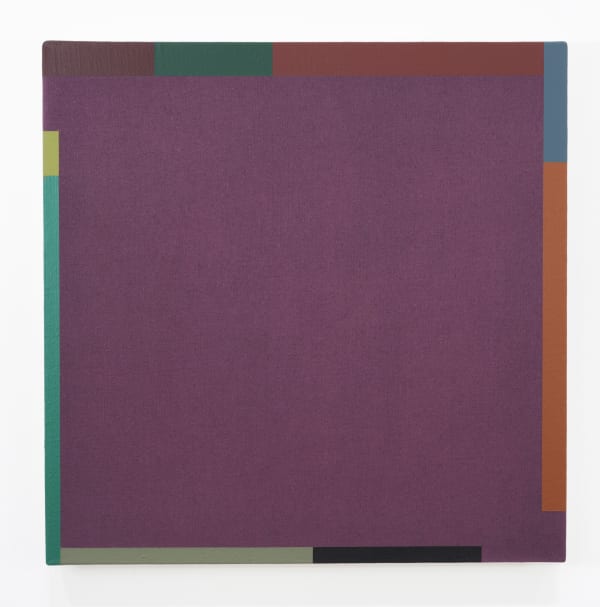Now & Then: The work of David Simpson
I want my paintings to create space without taking it, and to be contemplative in the process.
Haines Gallery is pleased to present Now & Then: The Work of David Simpson, a solo exhibition spanning over five decades of artwork by one of the San Francisco Bay Area’s most significant painters. This retrospective look at David Simpson’s extraordinary career coincides with the publication of David Simpson: Works, 1965–2015, a new, large-scale monograph from Radius Books documenting the artist’s entire oeuvre.
This is the first exhibition that will enable viewers to consider the vast diversity of Simpson’s painting practice, which weaves together impulses of minimalism and hard-edge abstraction with those of the California Light and Space movement to forge an entirely singular creative vision, one that rewards careful consideration. “I want my paintings to create space without taking it,” Simpson has remarked, “and to be contemplative in the process.”
The earliest pieces in the exhibition, Simpson’s striped paintings from the late 1950s and early ‘60s, signal a departure from the geometric abstraction that previously defined the artist’s career. In works such as Coast Stripe (1961), soft bands of oceanic color radiate from the vanishing point of a distant horizon line, blurring into overlapping, translucent washes before regaining their composure at the canvas’ edges. These early works — many of which have not been shown since premiering in museum exhibitions in New York and San Francisco — showcase Simpson’s remarkable ability to compose with color. With their pared-down hints at landscape, the paintings of this period form a surprising antecedent to the works on paper that Simpson began producing in the early 2000s — acrylic paintings of layered and scraped luminosity that evoke a spelunker’s cave as much as the misty peaks of a classical Chinese landscape.
The 1970s finds geometry returning to Simpson’s practice, first in the surprising rectangular bands of color that frame and compliment otherwise monochromatic works such as Amigo (1976); and later, at the dawn of the 1980s, with Suprematist-like compositions of squares atop squares in starkly contrasting black, red and white. As the decade wore on, the canvases themselves would be reshaped to create Simpson’s Eccentric Monoplane and Polyplane pieces — angular inventions made from interlocking panels of color unlike anything Simpson has produced before or since. A number of these works are on view in the exhibition: triangular, cruciform, and unnamable shapes that show the artist working at the height of innovation.
Simpson’s boundless curiosity and desire to expand the limits of his chosen medium are the red threads that link all of the works in Now & Then. These impulses are reiterated in a selection of the artist’s celebrated interference paintings, made using special pigments whose titanium-coated mica particles appear to shift dramatically in hue depending on the lighting conditions and the position of the viewer. In Year of the Dragon (2014), for example a royal purple shades miraculously into a peacock green. Throughout the show, Simpson’s poetic titles offer up associative clues, while the works imbue sensual, optical experience with a profound sense of the sublime.















